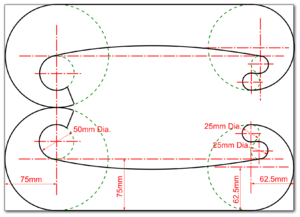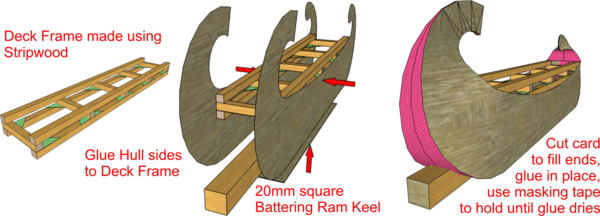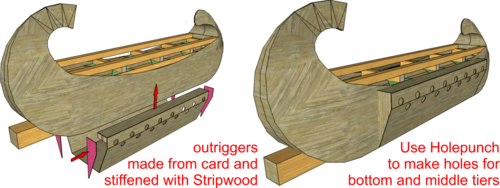Trireme Model: Difference between revisions
From DT Online
mNo edit summary |
No edit summary |
||
| Line 54: | Line 54: | ||
{{Stripwood Materials Buyers Guide (1)}} | {{Stripwood Materials Buyers Guide (1)}} | ||
[[Category:Primary]] | |||
[[Category:Ancient Greece]] | [[Category:Ancient Greece]] | ||
[[Category:The Romans]] | [[Category:The Romans]] | ||
[[Category:Topics, Projects and Tasks]] | [[Category:Topics, Projects and Tasks]] | ||
[[Category:Tasks]] | [[Category:Tasks]] | ||
Latest revision as of 07:05, 19 September 2018
Description
The Trireme was a Galley with three tiers of oars used by both the Ancient Greeks and The Romans. The Ancient Greek warship was crewed by free men who rowed with great coordination and skill to power the vessel forward. At the front was a Battering Ram and one tactic was to row a full speed into the side of an enemy craft to sink it.
Making a Model Trireme
Making models of historic building and objects is a good way to understand them and remember what has been learned - it is also good fun! A display model of a Trireme can be made using Card and Stripwood Materials.
Marking out the hull shape
The model described is based around a sheet of A3 Card and 8mm square Stripwood.
- Start by designing the shape of the Hull and transfer on to A3 Card in Landscape orientation as shown (click to enlarge);
- Cut two out of Thick Card.
Assembling the hull
- Construct a Deck Frame to separate the two Hull sides using 8mm square Stripwood and reinforce with Medium Card triangles;
- Glue the two hull sides to the Deck Frame and leave to dry;
- Pull the two ends together and temporarily hold with Masking Tape;
- Lay the part-assembled Hull over a sheet of Medium Card rolling it as needed and trace round the shapes required to fill in between the Hull sides at each end;
- The Medium Card shapes can simply be glued on to the Thick Card Hull sides by running a bead of glue round the inside of the join and tape in position until the glue dries;
- Alternatively add Glue Tabs to the Medium Card shapes or first glue a length of Art Straw or Drinking Straw along the joining edge of the Hull sides to provide a joint surface.
- Cut away the front to accommodate the 20mm square Battering Ram
Assembling the outriggers
- Fold up Medium Card to make the outriggers as shown – alternatively, cut separate strips of Thick Card and glue together;
- Stiffen with strips of Stripwood;
- Either cut slots for the bottom and middle tiers of Oars or use a Hole Punch;
- Glue the outriggers in position enclosing the 20mm square Battering Ram.
Completing the Trireme
- Add a Mast by 'stepping' a length of Dowel into a MDF or Ply Disc and glue to the Deck Frame;
- Add a Main Spar by fixing a length of Dowel across the top of the Mast either by lashing with string and glue or by cutting two holes at right angles into a short length of PVC Tubing;
- Make a Sail out of Thin Card, paint as required and glue along the Main Spar;
- Add Oars made by squashing the end of Art Straws or Drinking Straws.
Notes:
- MDF Discs which are pre-drilled are most useful if available, otherwise this might be done as preparation before using with younger children - alternatively a Hand Drill Stand could be used (if neccessary, adults or older children can cut them out of strips of MDF or Ply using a Holesaw).
- Dowels 4mm, 5mm, and 6mm are useful sizes for axles.
- Florist Wire is easily bent into shape whereas stiff wire, such as Brass Brazing Rod, is more suitable for connecting rods.
























